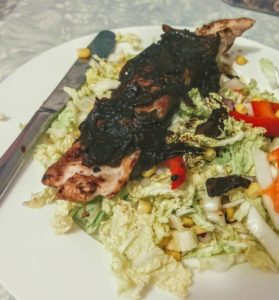(Continued from yesterday’s Sueness and Popularity post)
This post is a list of all the statistics I’m going to collect on each webcomic. It might not be very entertaining; the point is to stop me fiddling with things half-way through the process.
Comic Details
- Title
- Website (somewhere from which the rest of the comic is reachable — preferably the home page)
Author details
For each artist, writer, etc. if several. This includes colourists.
- Full Name, if public (The test I’m using cares about author name, but I don’t want to go stalking people just to get accurate results.)
- Any other public names, psuedonyms, etc
- Date they started contributing to the story (if they weren’t there from the start)
I’ll collect each of these numbers twice: once when the comic is first added, and again a month later when I score it.
If I miss a day, I’ll collect the data for that day as soon as I have time (hopefully not more than a couple of days late).
- Nominal data-collection date (when I should have collected these stats — date added, or that date plus one month).
- Actual data-collection date (should usually be the same)
- Number of comic pages. This includes side stories, title pages, etc., but not non-story content (cast lists, author commentary), or guest comics that don’t contribute to canon. Text-only pages (like Erfworld often has) do count.
- TWL stats (“views this month”, “average views a month”, “favourite of n members”)
- Number of TWL comments
- Number of “accusations” in those comments (posts saying the comic contains a Mary Sue)
Character Details
I aim to score every distinct character who appears in more than one comic page (if there’s only one page, I’ll score every character in it). This includes animals, AI’s, robots, etc., but not random inanimate objects (e.g. the One Ring isn’t a character).
Interchangeable randoms (e.g. mooks, or most of the stick figures in XKCD) don’t count, but named characters who never appear on panel do (if they’re mentioned on at least two pages).
As well as the score, I’ll collect this inforation:
- Name
- Other names (psuedonyms, superhero names, maiden names, etc.)
- Gender (“male”, “female”, or “other”, based on how the character’s presented in the comic (so robots, aliens, etc. can be male or female if they’re presented as clearly one gender). If the correct gender is complex or unclear, I’ll use “other”.
- Number of pages with this character (same rules as above).
Mary Sue Test score
(For each non-one-off character, as above.)
I’ll score characters based off supplementary information (commentary, previous comics with that character, etc.), even if I wouldn’t include it in the page count. However, I won’t consider (and will try to avoid reading) anything that was published after the one-month cutoff date.
If a comic is fanfic, I’ll try to research the canon enough to score it correctly — but I won’t necessarily read the whole source canon.
This might mean reading spoilers. If so, I reserve the right to either (a) put off scoring the fanfic until I’ve read the original, or (b) get someone else to score it according to this protocol. However, I don’t plan to do this unless the original is something I really want to read.
A lot of questions ask about the author’s intent or feelings. If I have that information (e.g. from author commentary), I’ll use it. If not, I’ll default to “no” when the question is just about the author’s mind (e.g. “do you see your character as a role model”), or “yes” if there’s a concrete part I can answer “yes” to.
For instance, “does your character have … an exotic name … chosen primarily because” will get a “yes” if the character has an exotic name but I don’t know why it was chosen.
If I run into anything else ambiguous, I’ll check SyeraMiktayee’s Ask.fm (but I won’t actually ask about it, as I don’t want to spam xir with questions). If that doesn’t clear it up, I’ll just pick something and document what I did.



